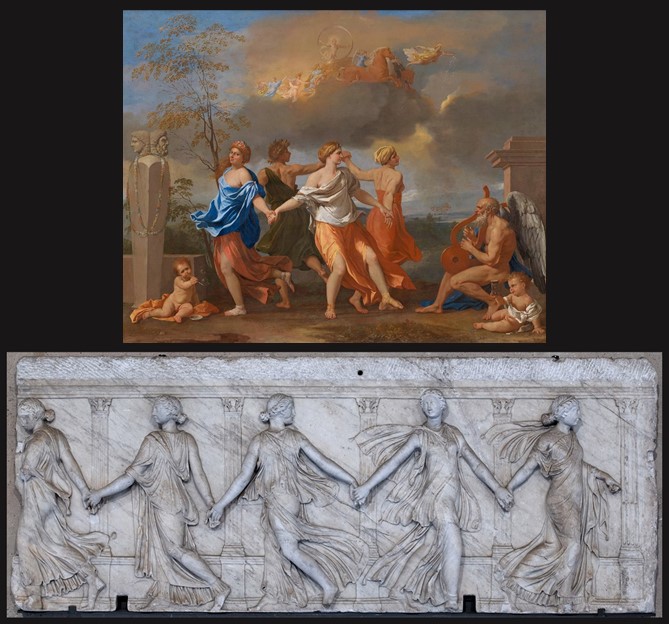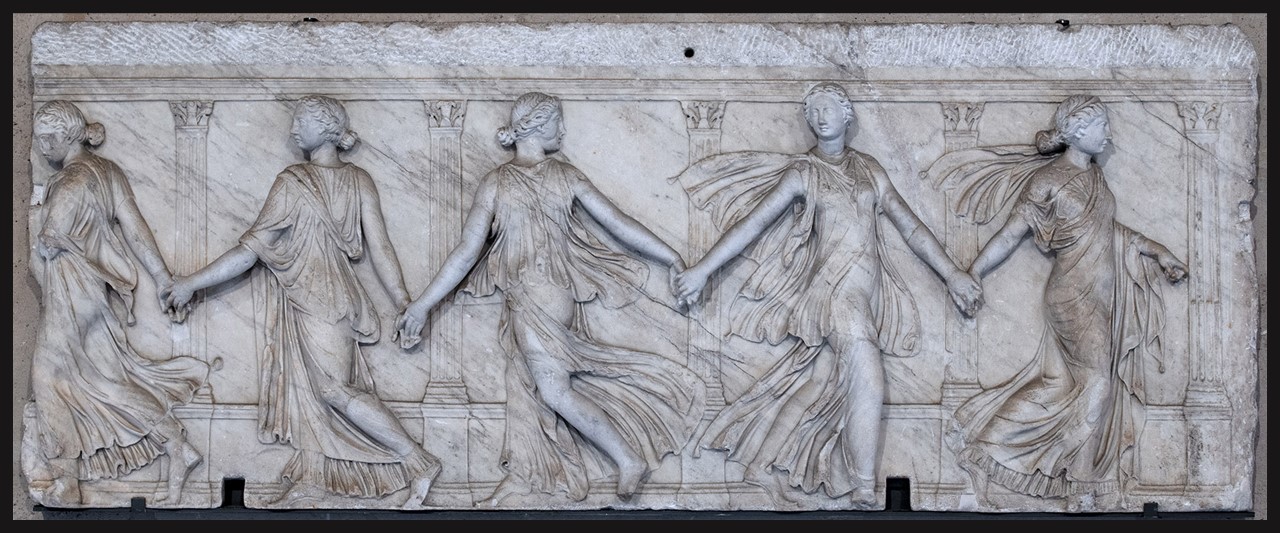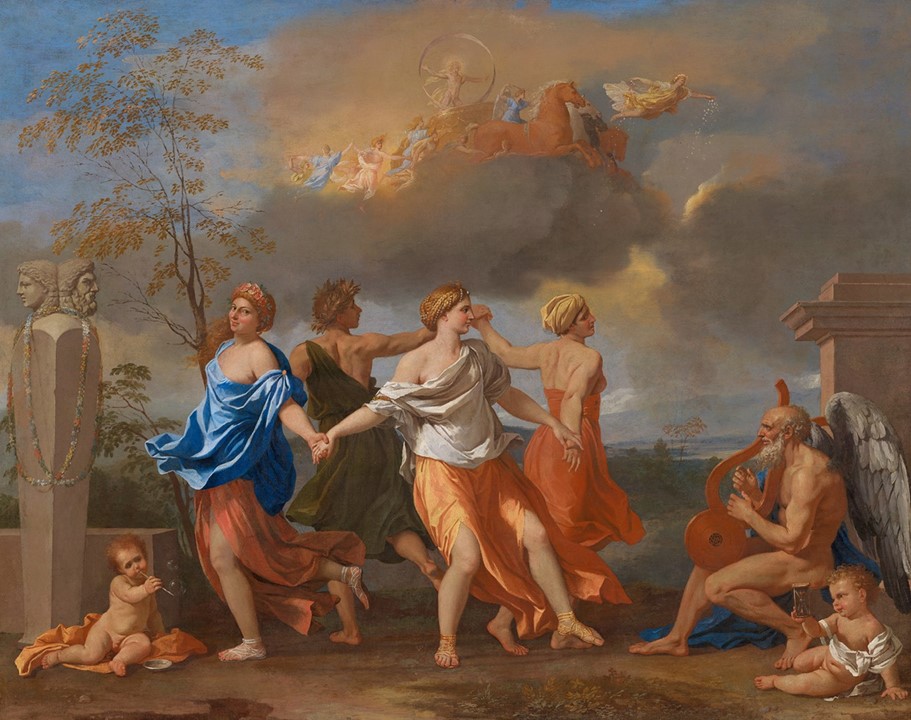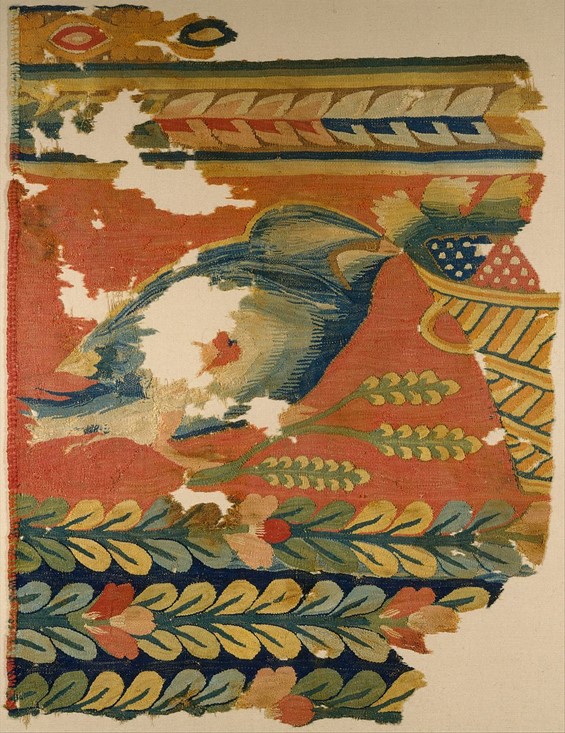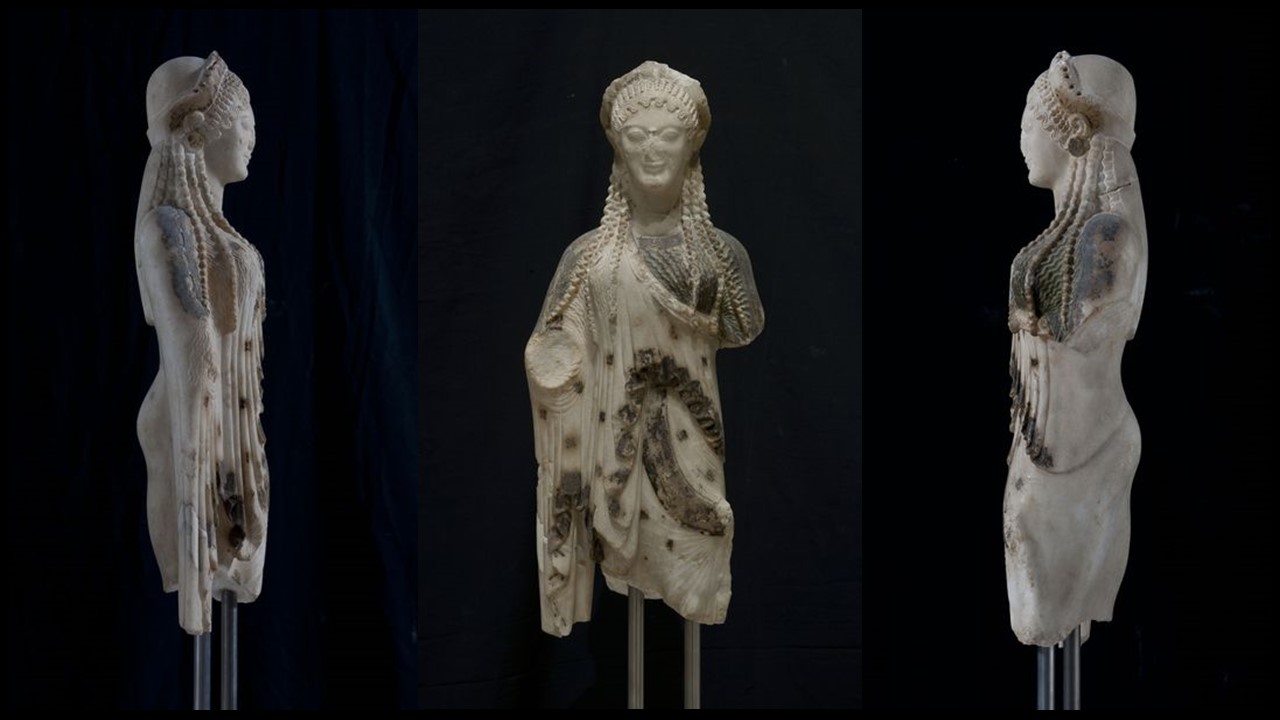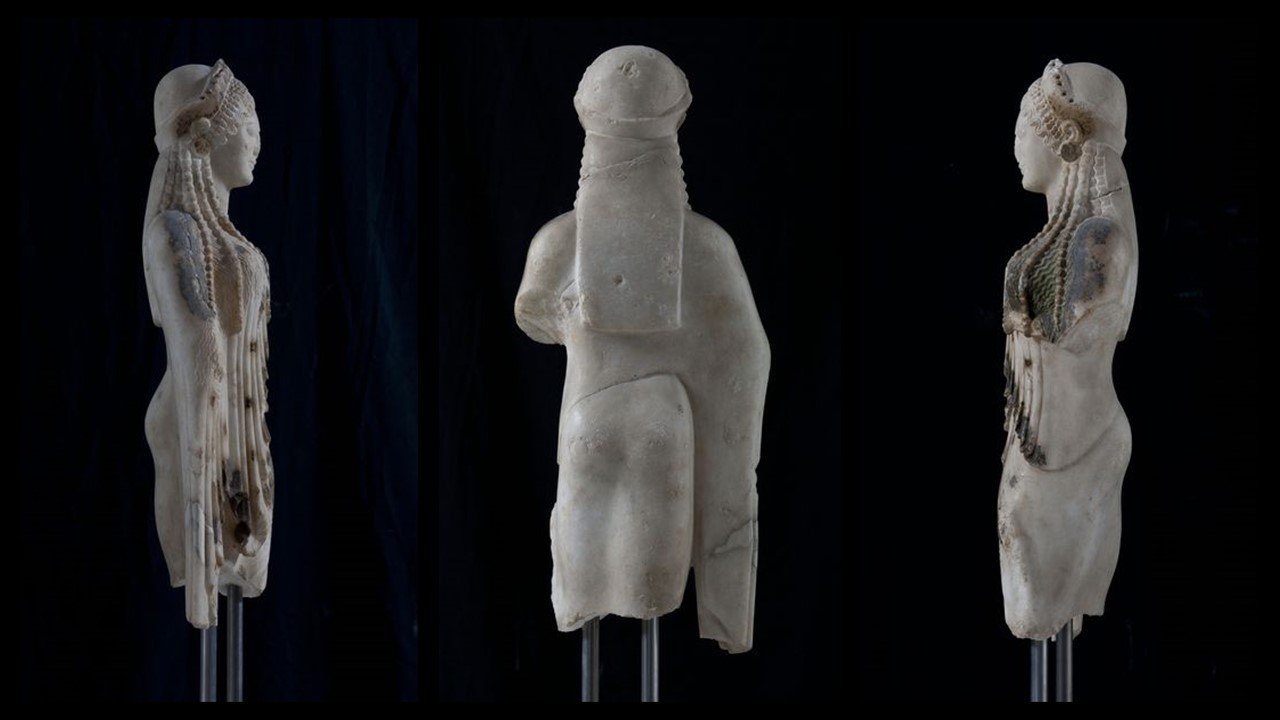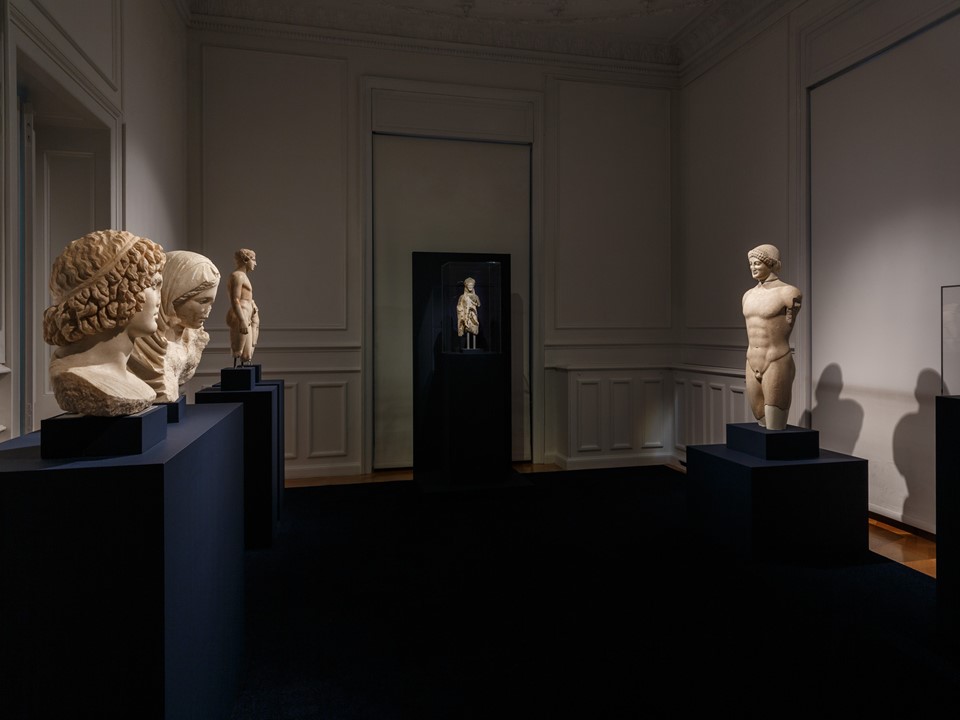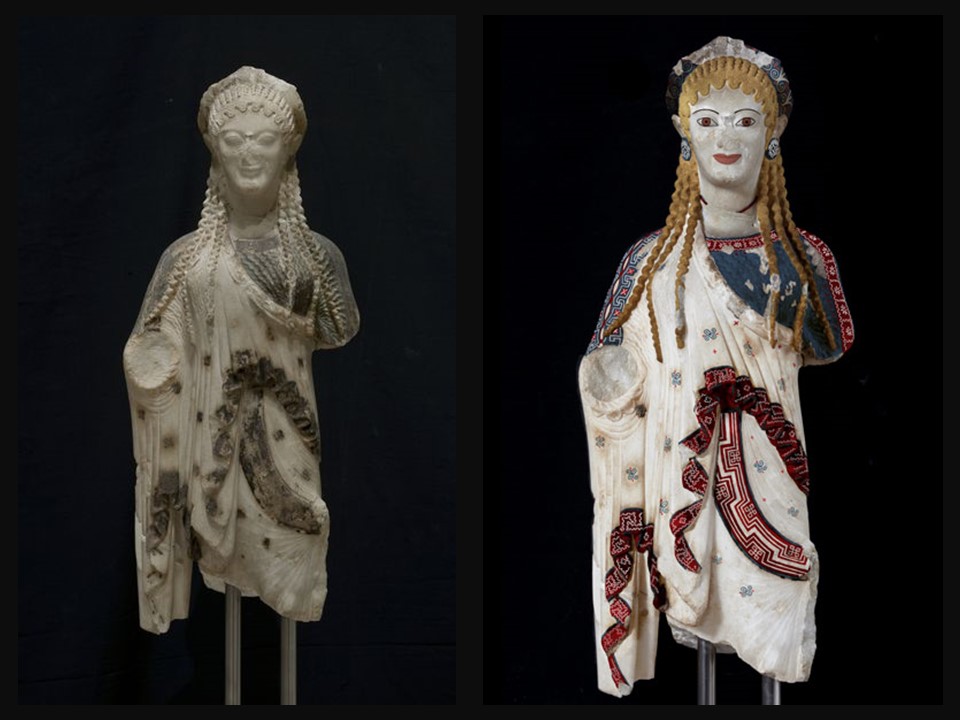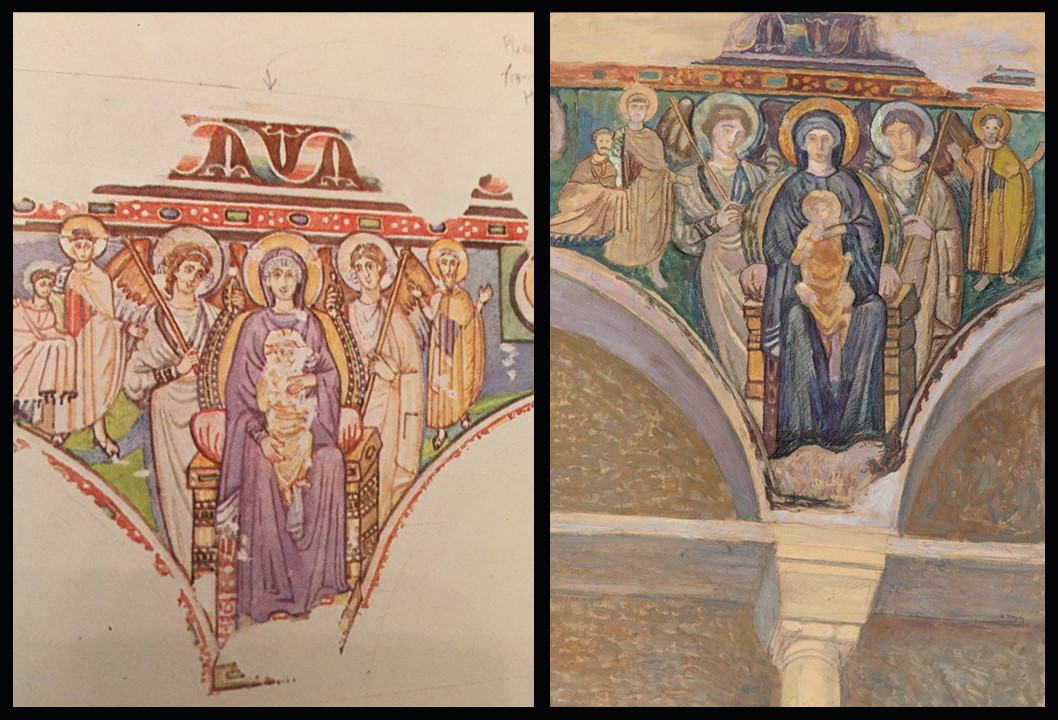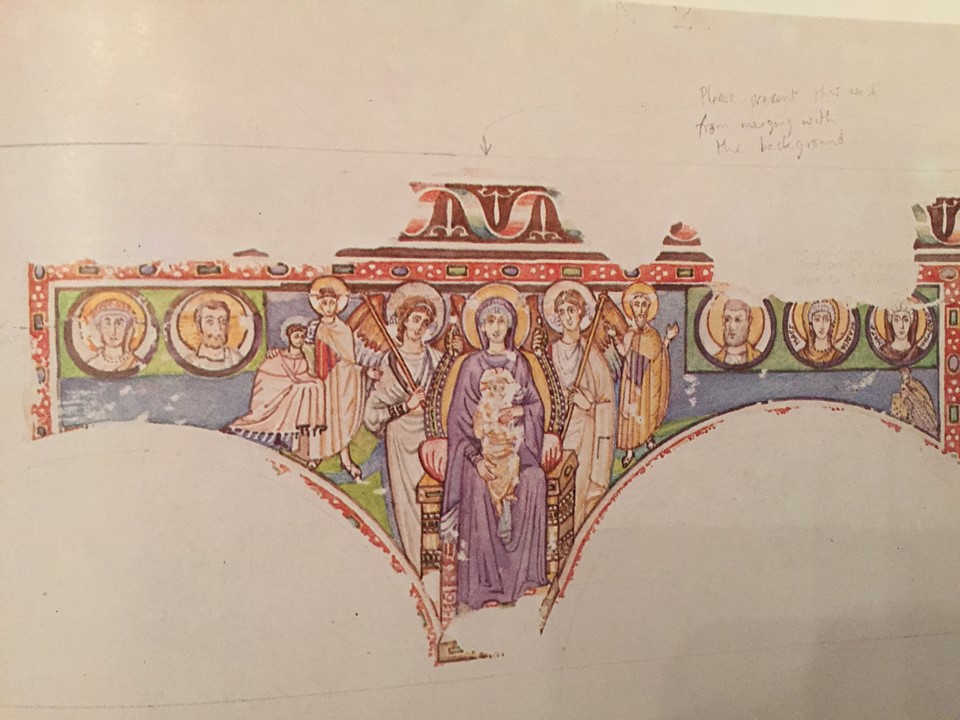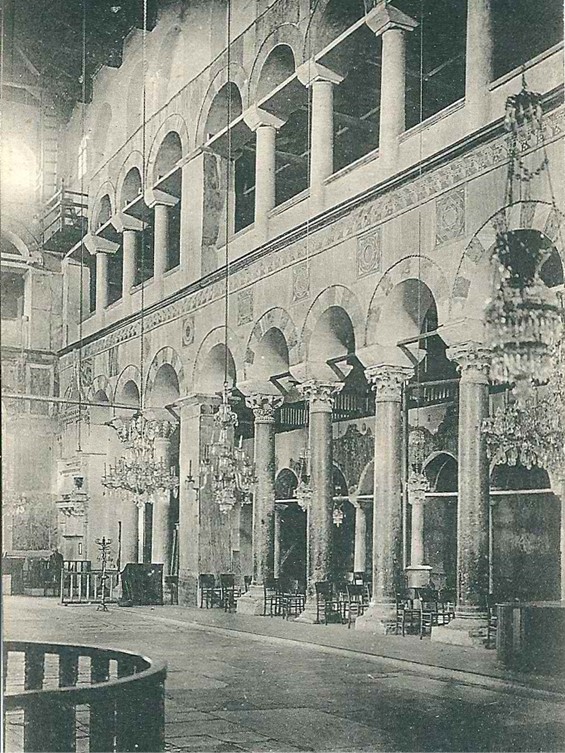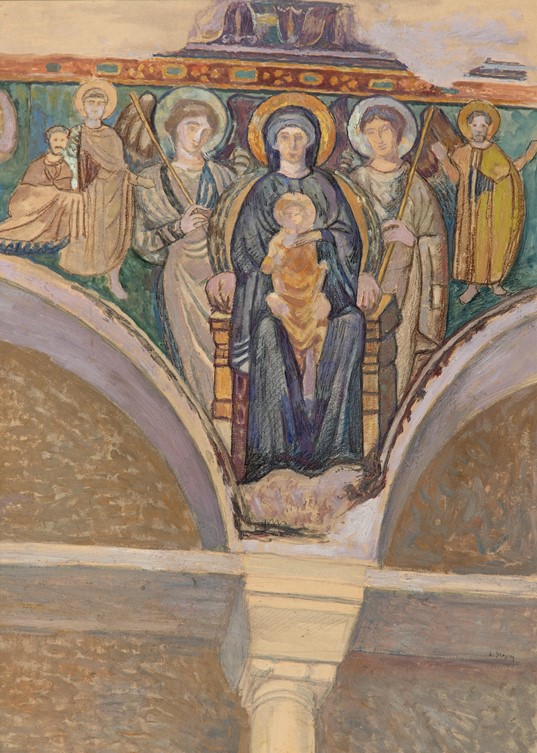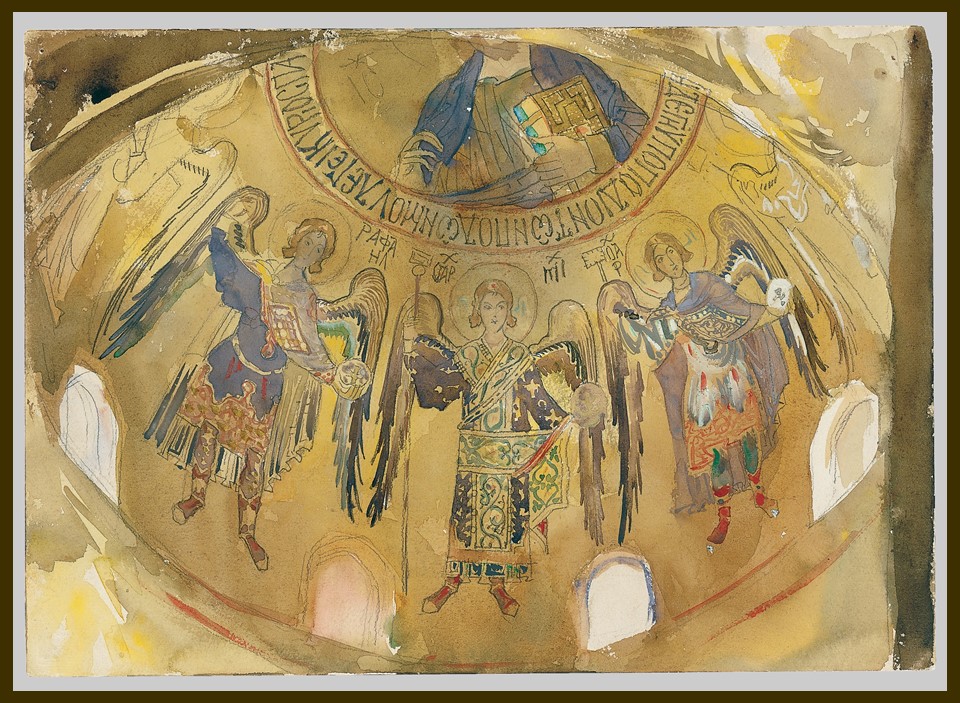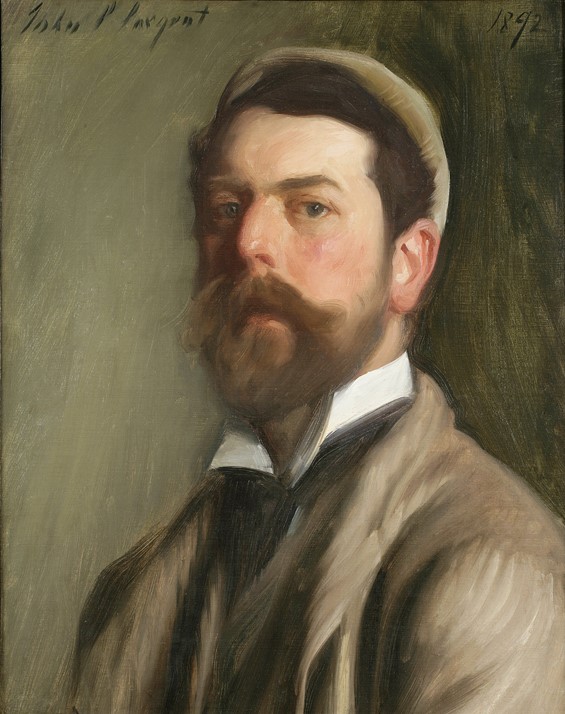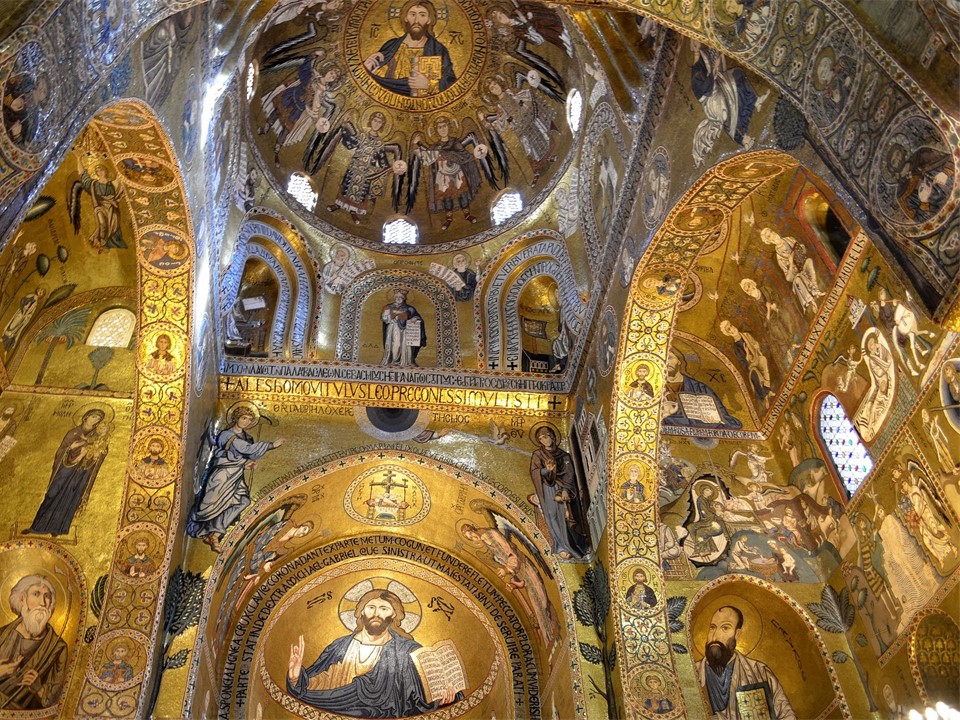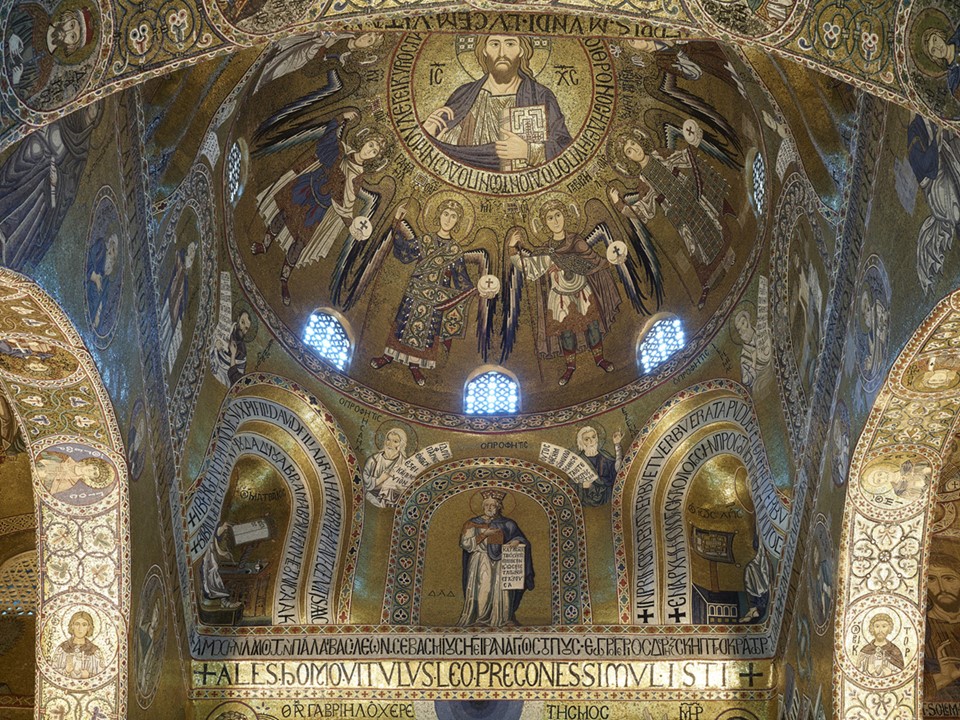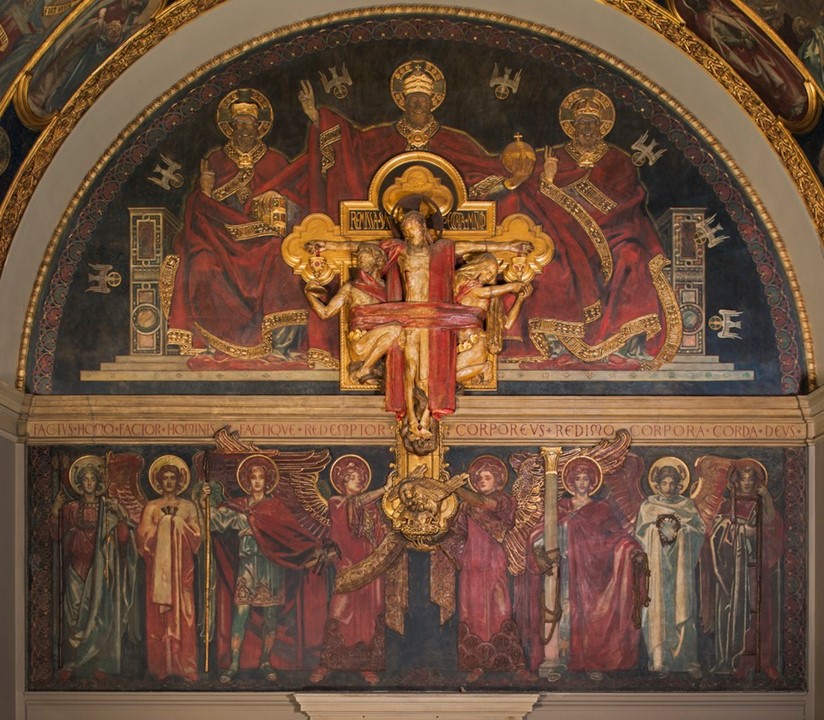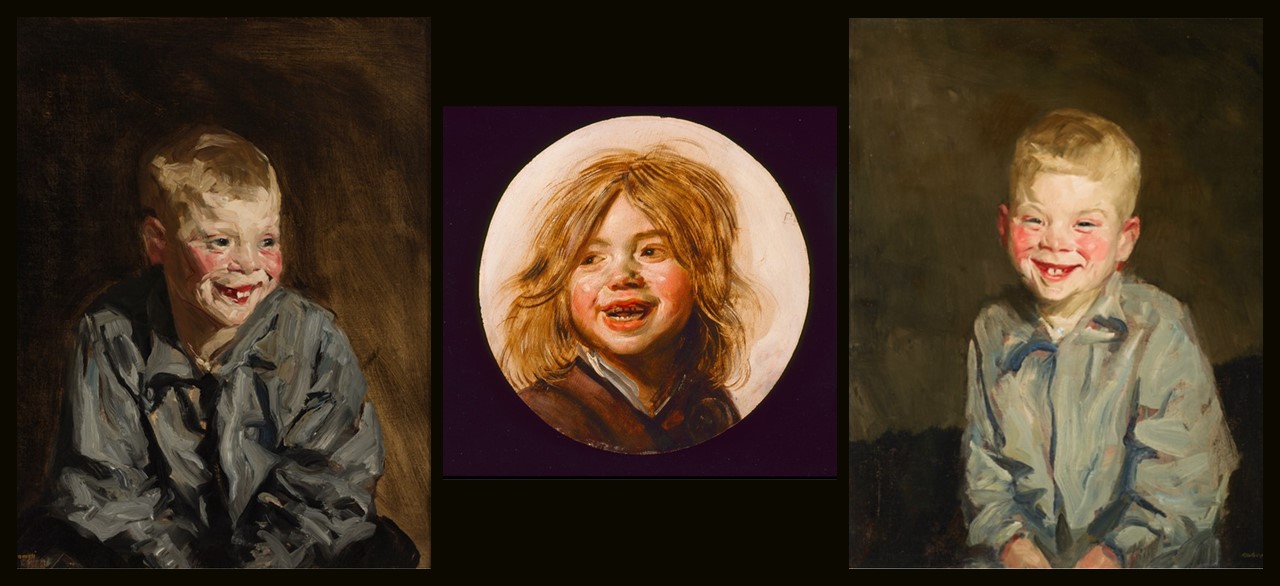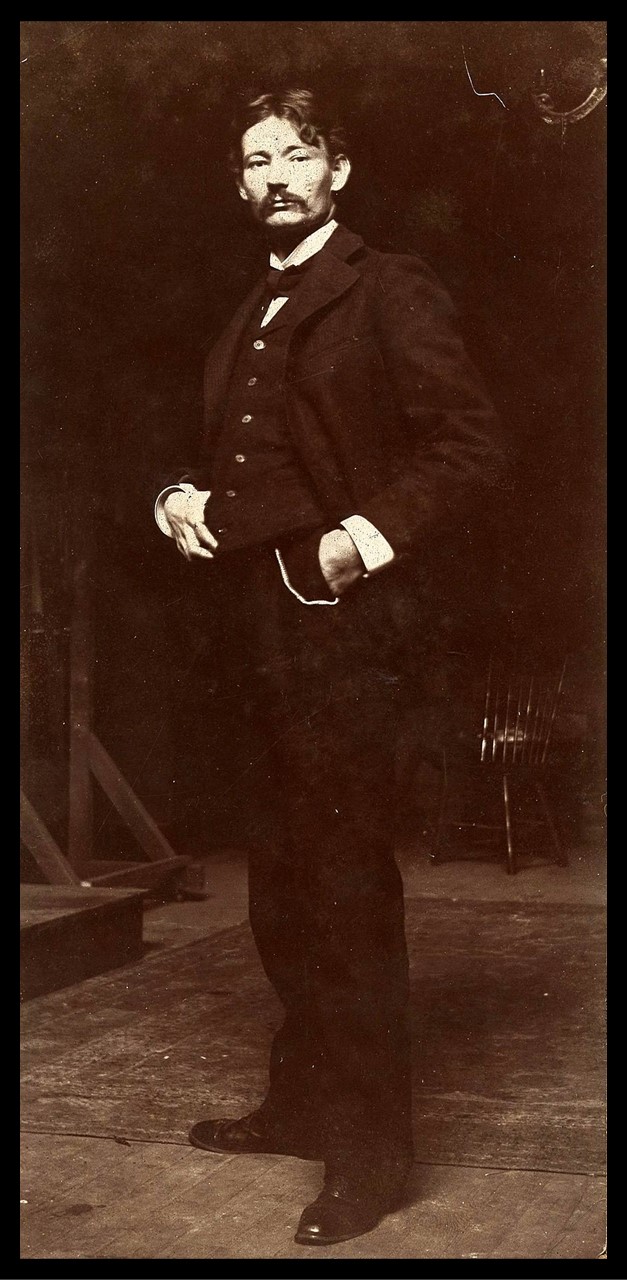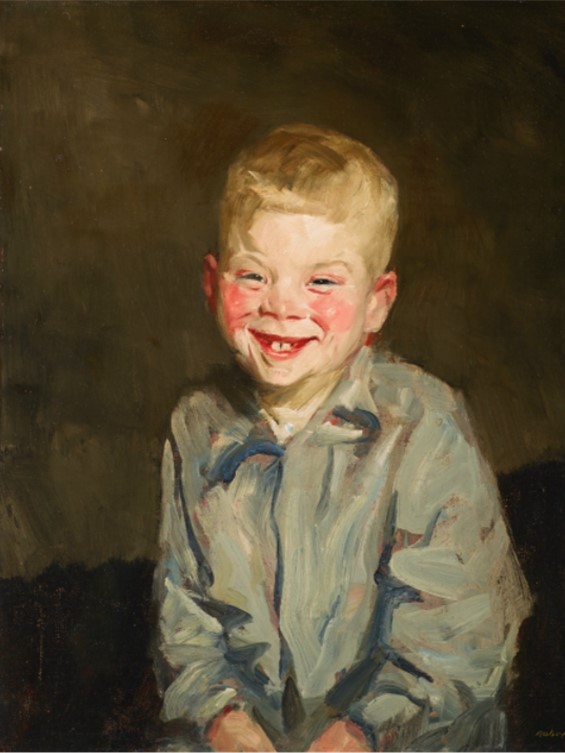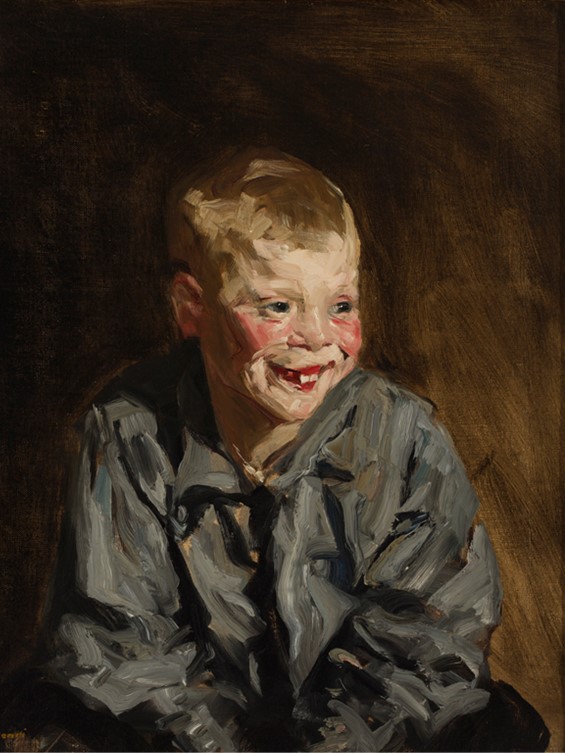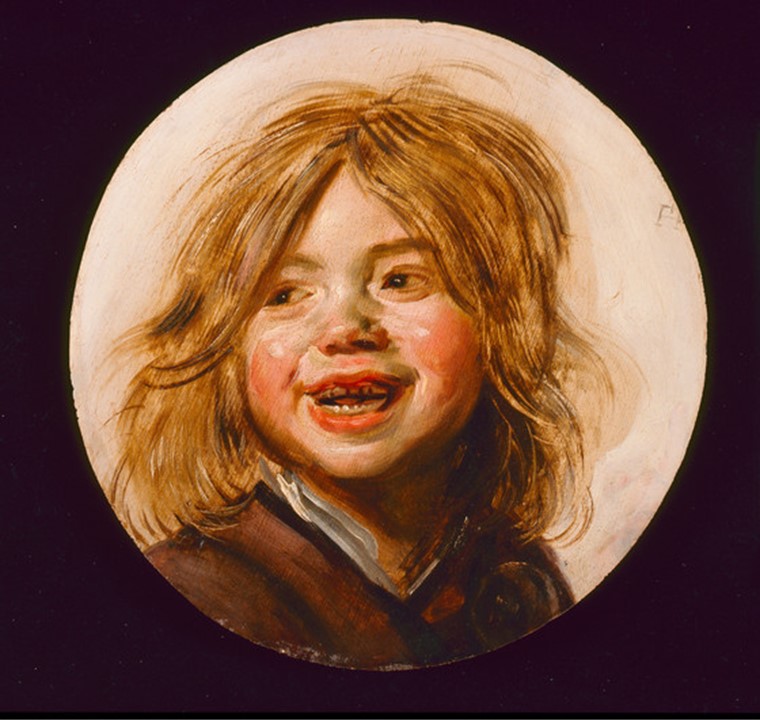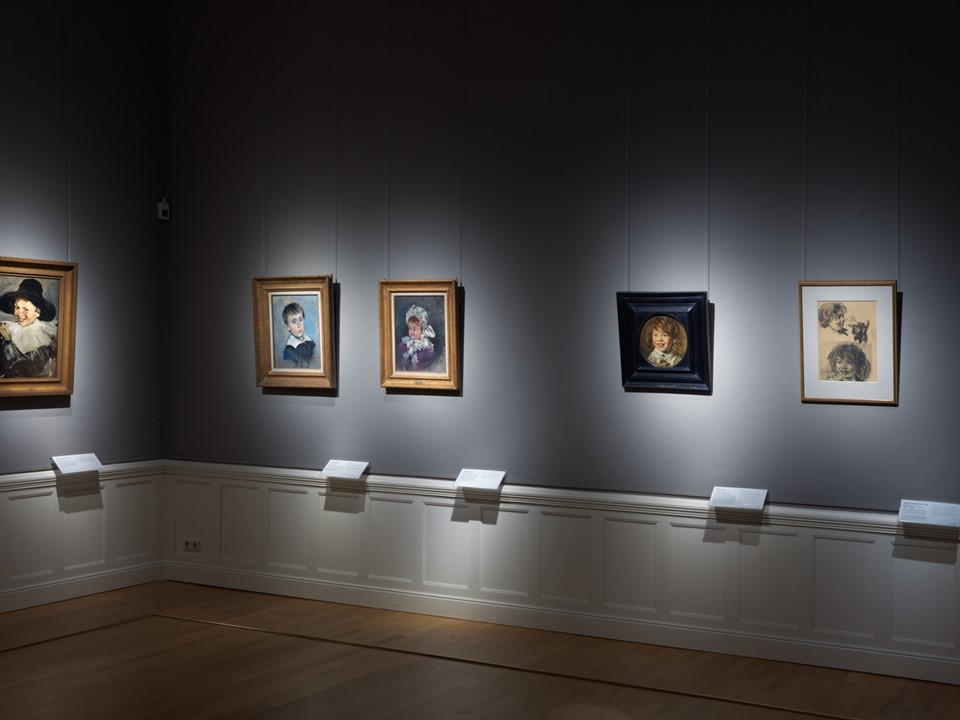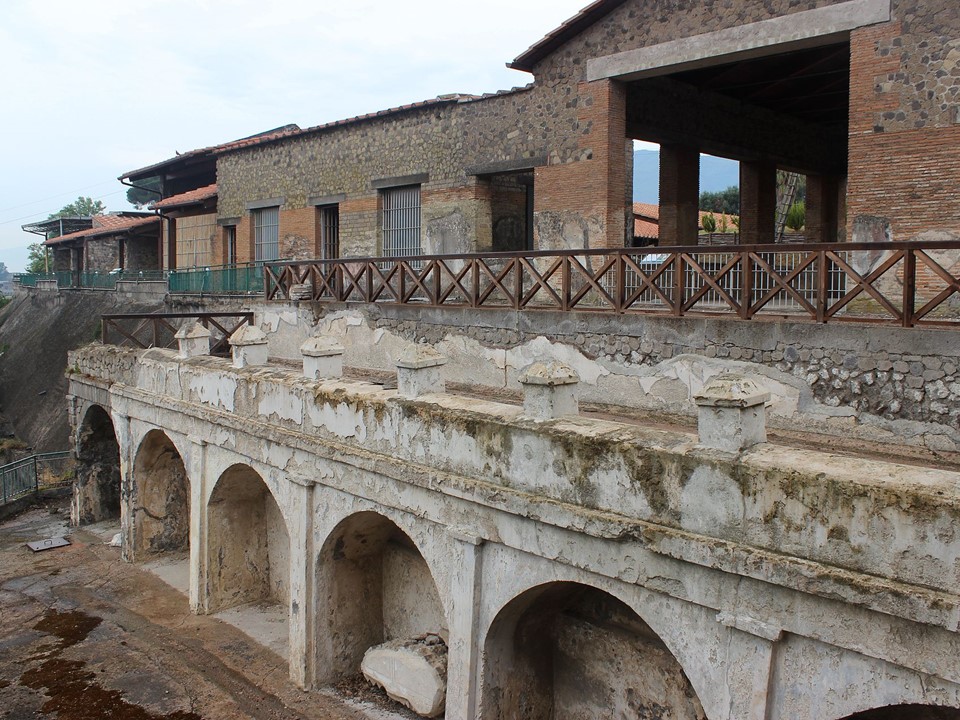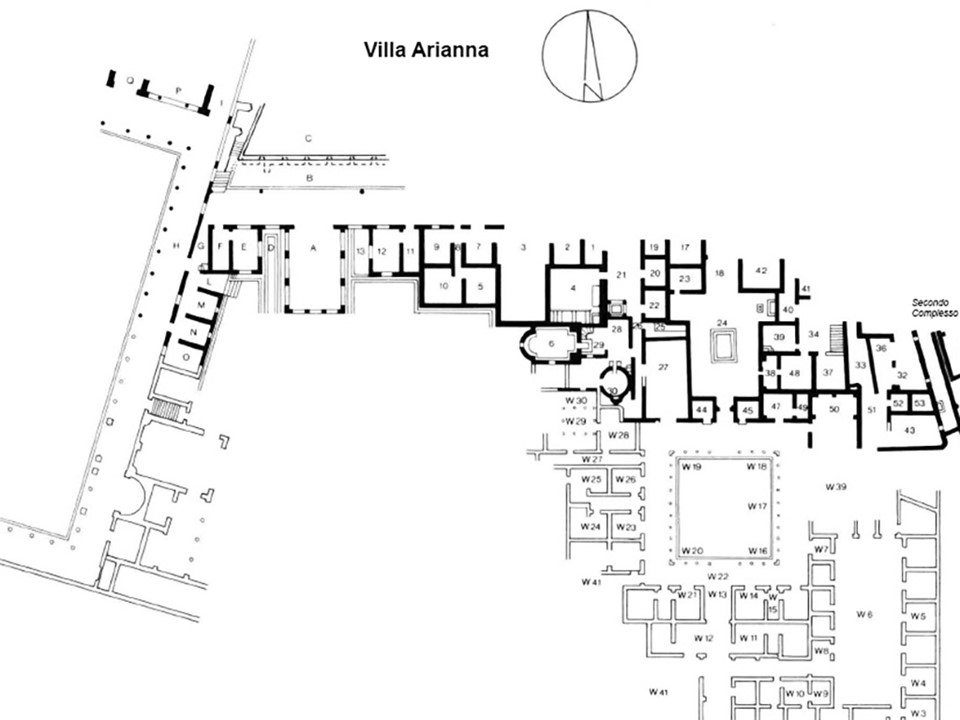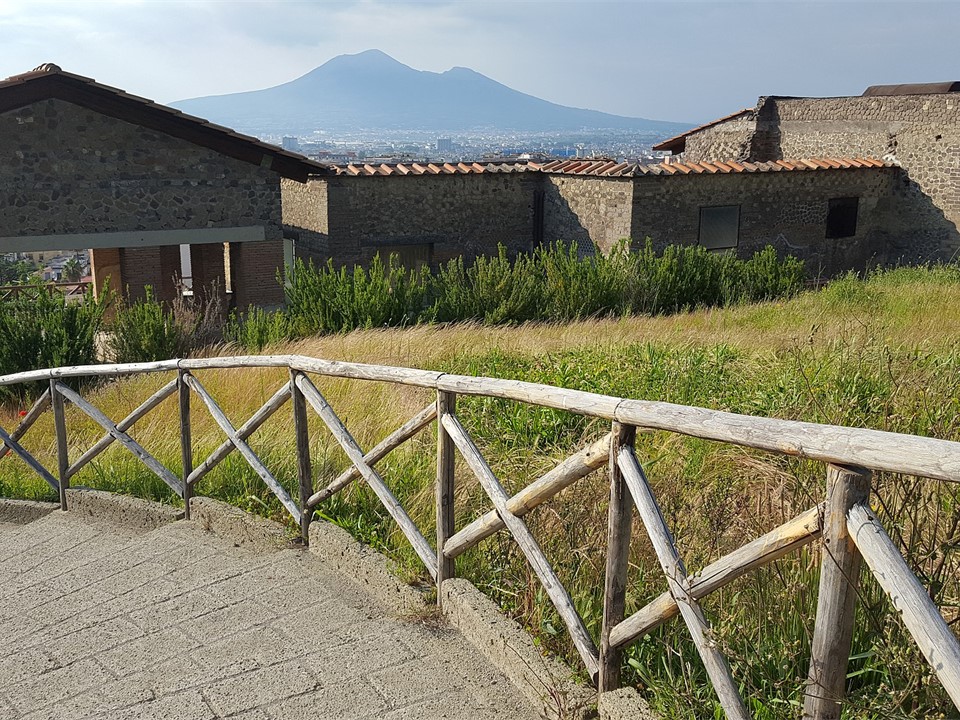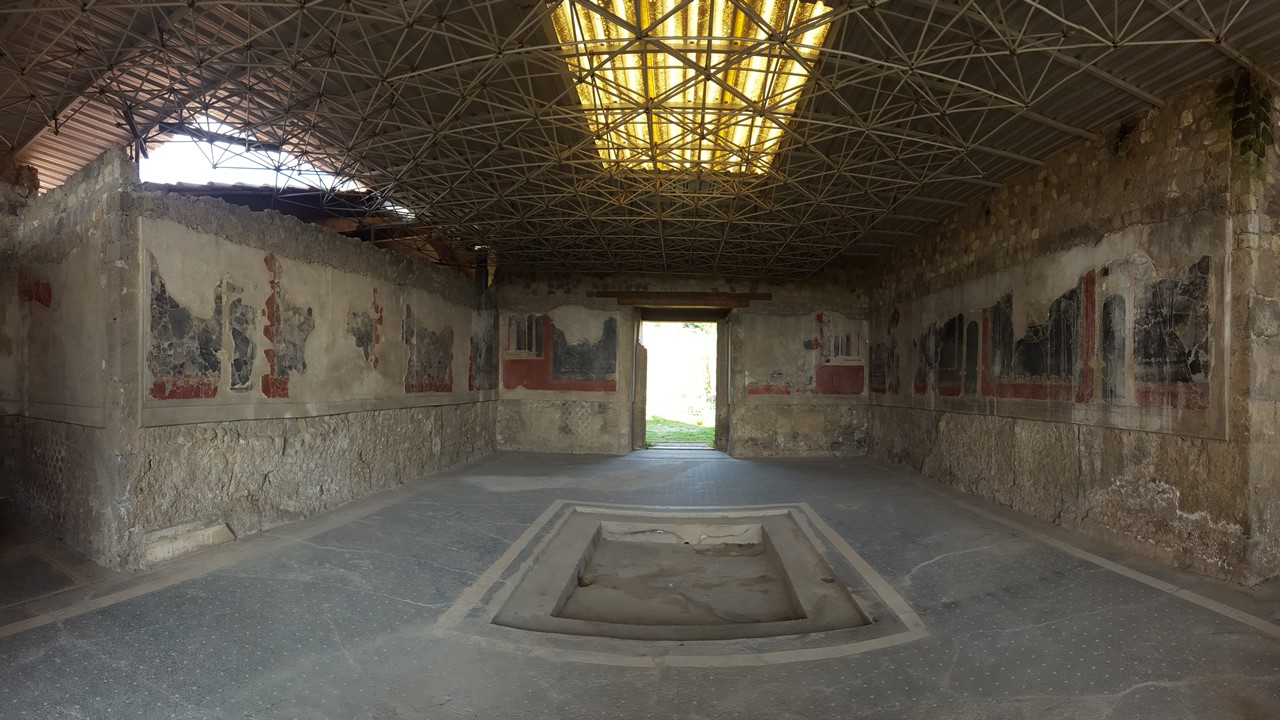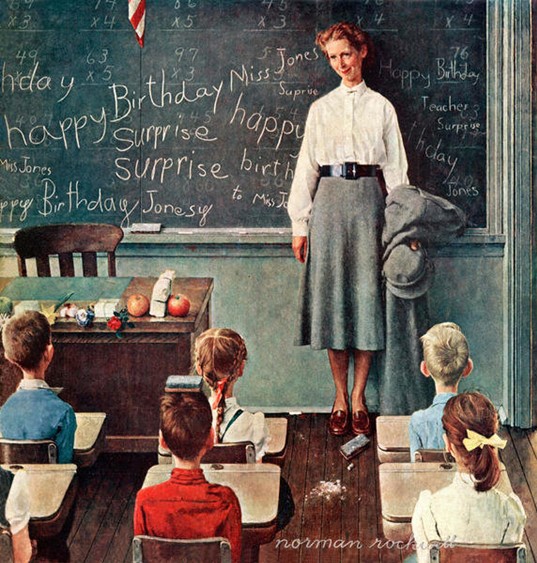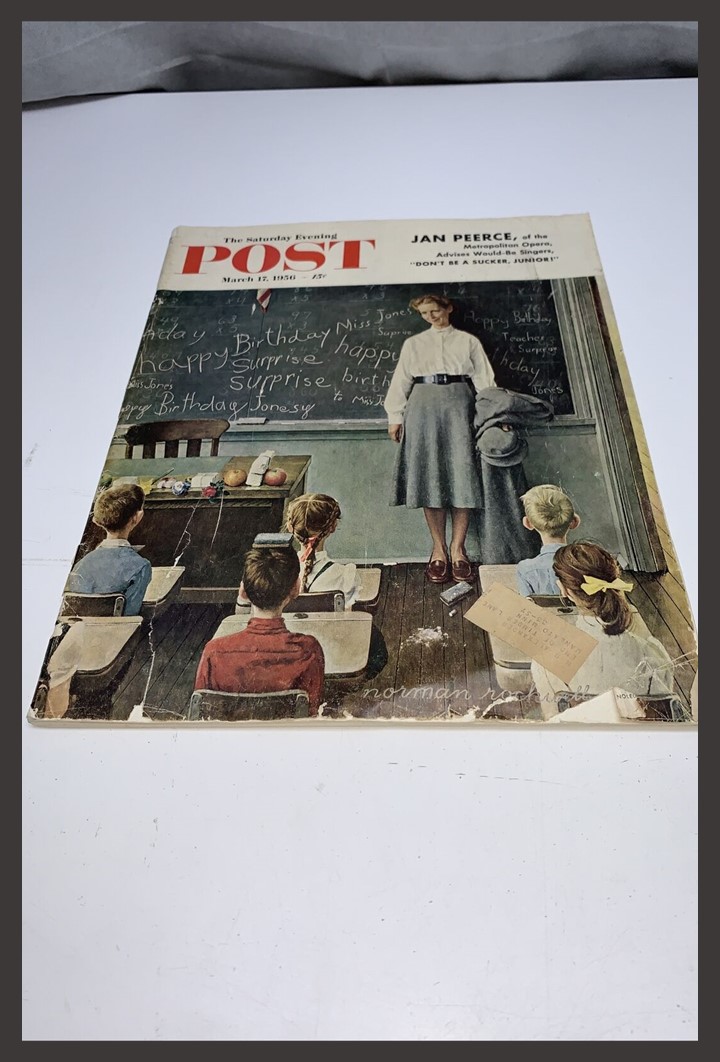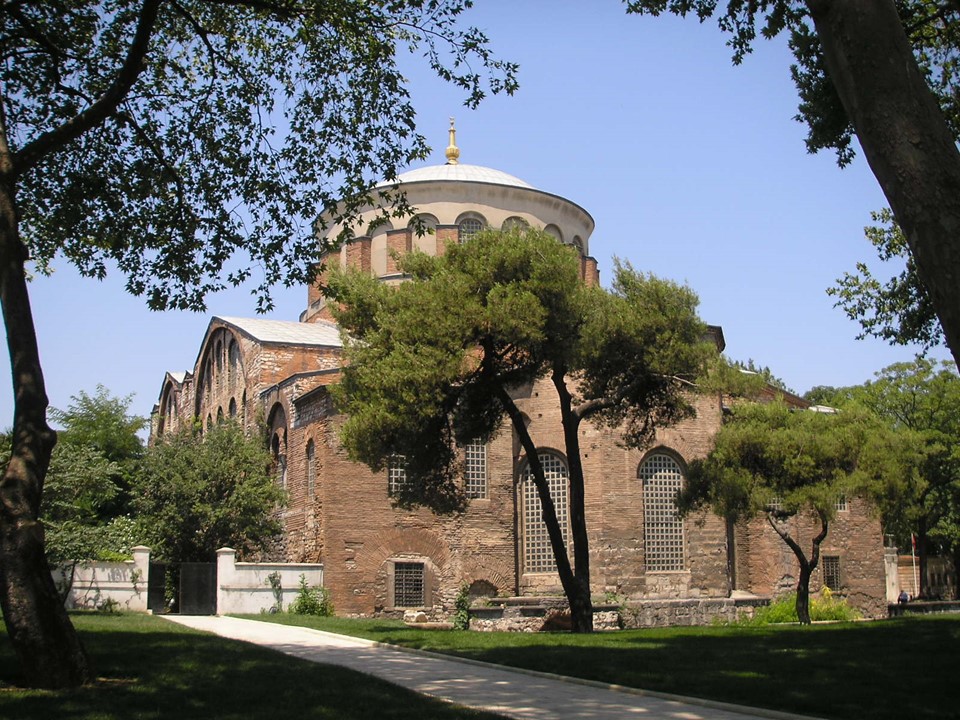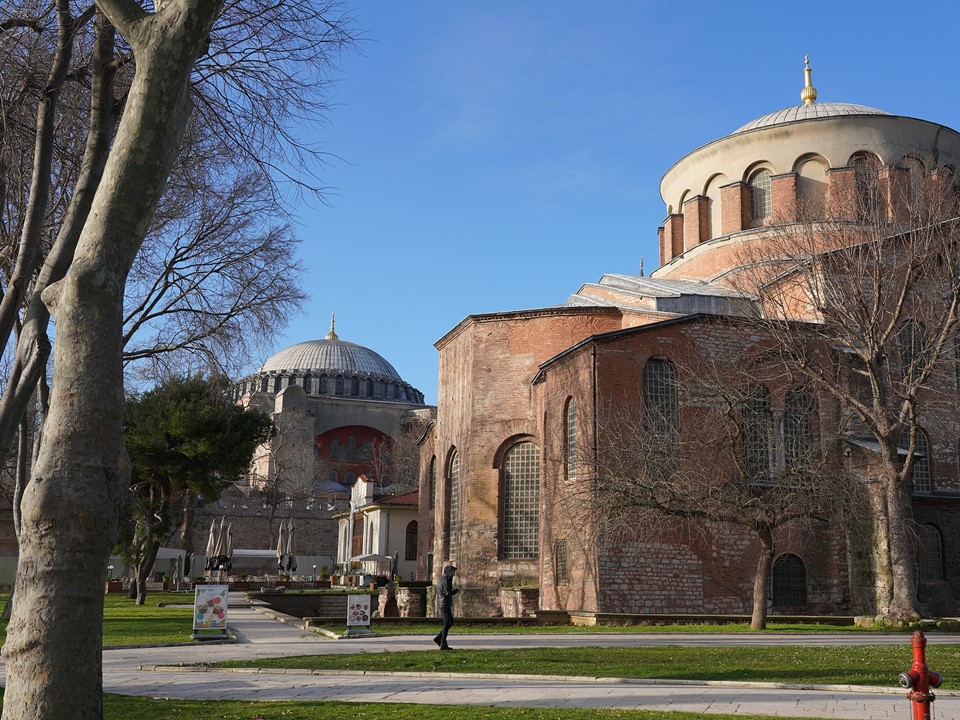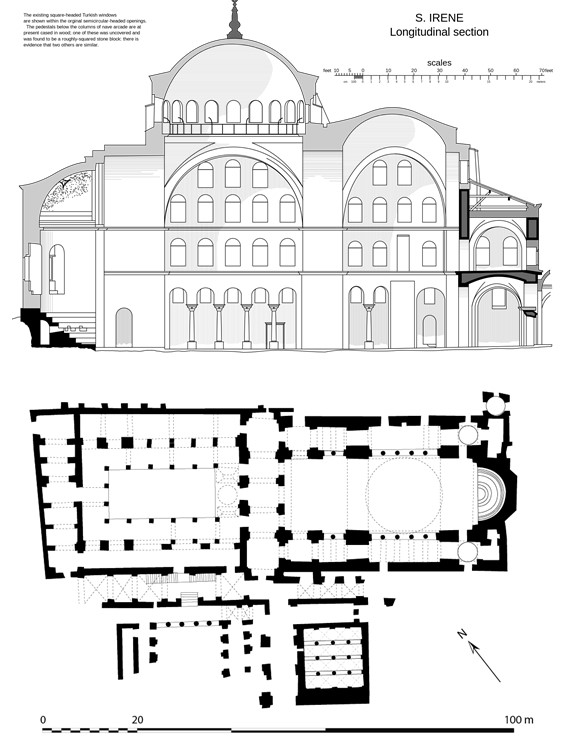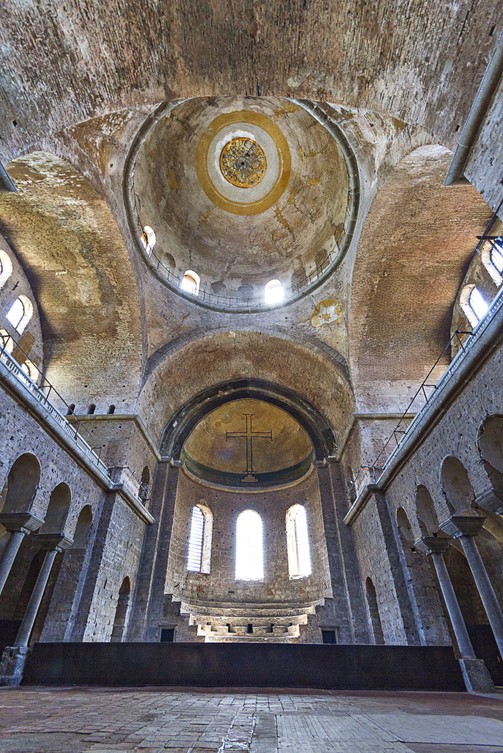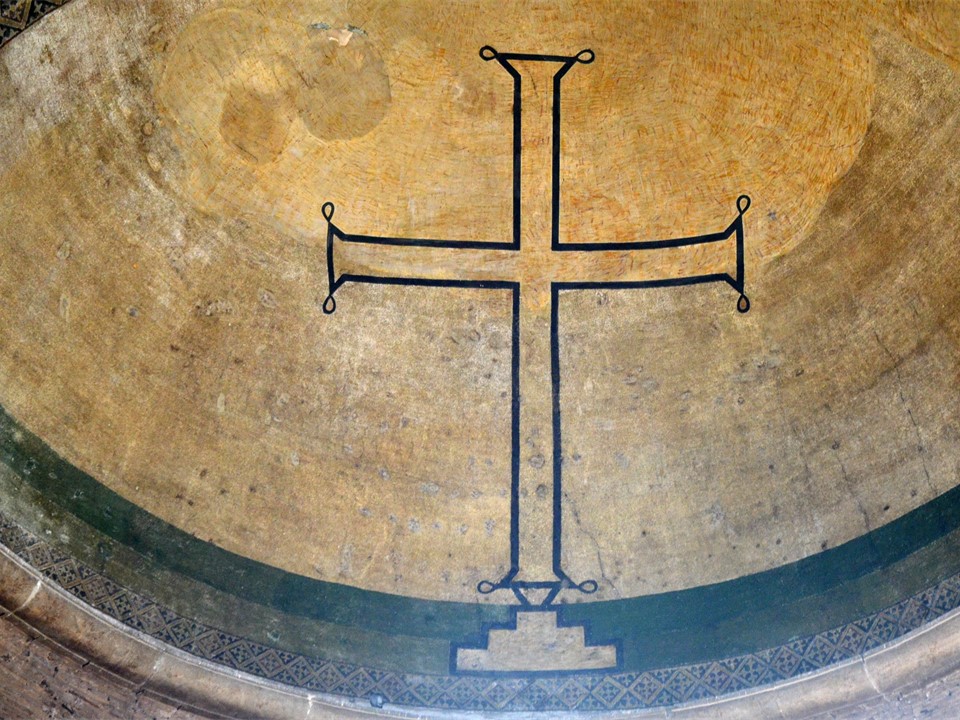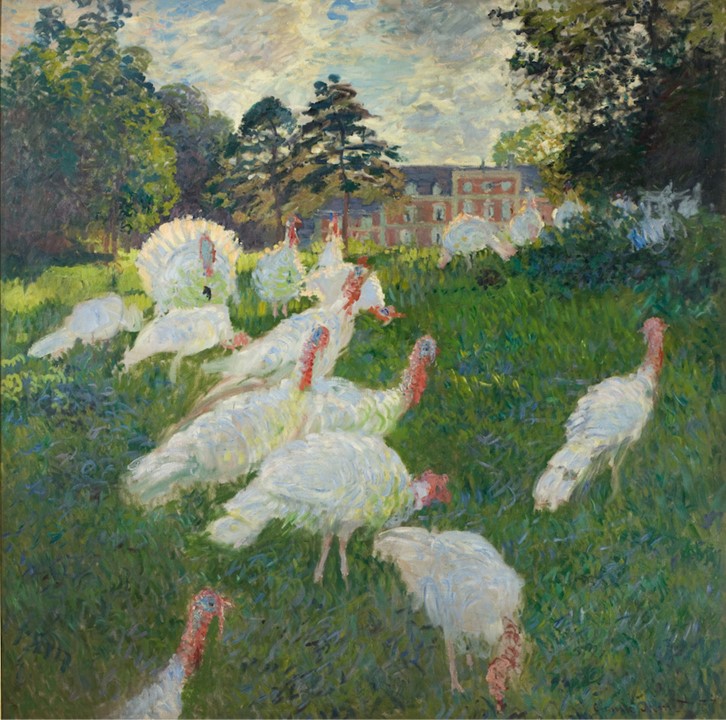
The Turkeys, 1876, oil on canvas, 1876 174×172 cm, Musée d’Orsay, Paris, France
https://www.musee-orsay.fr/fr/oeuvres/les-dindons-1109
On Thanksgiving Day remember Ralph Waldo Emerson (18031882) and Give thanks for each new morning with its light, / For rest and shelter of the night. / For health and food, / For love and friends, / For everything they goodness sends… and feast your eyes with The Turkeys by Claude Monet. https://www.musee-orsay.fr/fr/oeuvres/les-dindons-1109and https://www.southernliving.com/thanksgiving/thanksgiving-poems
Claude Monet was a prolific painter, an innovator, and an astute businessman. He painted over 2.000 paintings, disillusioned with the Académie and the Salon system, along with friends like Degas, Renoir, Manet, Pissarro, and others, he founded the Impressionist movement, and despite popular belief, he became quite independently wealthy. Early on, at Le Havre, where he grew up, the15 years old Monet was quite known and popular as a caricaturist, charging the local buyers 10 to 20 francs for his art, signed O. Monet, as his first name is Oscar. As a teenager, Monet was also introduced to painting at Plein Air by his mentor and friend Eugène Boudin, who instilled in him a deep appreciation for the play of light on natural forms… If I have become a painter, it is entirely due to Eugène Boudin, Monet later acknowledged. It is interesting to know that in 1861, at the age of twenty, Monet was drafted into the First Regiment of African Light Cavalry and served for one year in Algiers where, upon later reflection, he believed that the impressions of light and color that he received there…contained the germ of his future researches. https://www.sothebys.com/en/articles/21-facts-about-claude-monet
In 1876, Monet painted The Turkeys, a unique theme for his artistic repertoire as Monet hardly ever painted birds. The painting was originally commissioned, along with three more canvases, by Ernest Hoschedé, his wealthy patron at the time, but soon changed owners until 1947, when the Princess Edmond de Polignac bequeathed the painting to the State of France to be exhibited in the Louvre Museum, and in 1986, the Musée d’Orsay in Paris. The Turkeys, not a particularly known painting by Monet, was first exhibited in 1877 at the 3rd Impressionist Exhibition at the Durand-Ruel Gallery. It was also part of major early 20th century Exhibitions like the 1910 Universal and International Exhibition in Brussels, and the first, 1931, Claude Monet: Retrospective Exhibition at the Orangerie Museum in Paris. The last grand Exhibition, this very unique Monet painting was presented, was the 2018-2019 Orsay as seen by Julian SchnabelExhibition at the Orsay Museum. https://www.musee-orsay.fr/fr/oeuvres/les-dindons-1109 and https://www.leparisien.fr/archives/grandeur-et-decadence-du-mecene-de-monet-31-01-2015-4493225.php
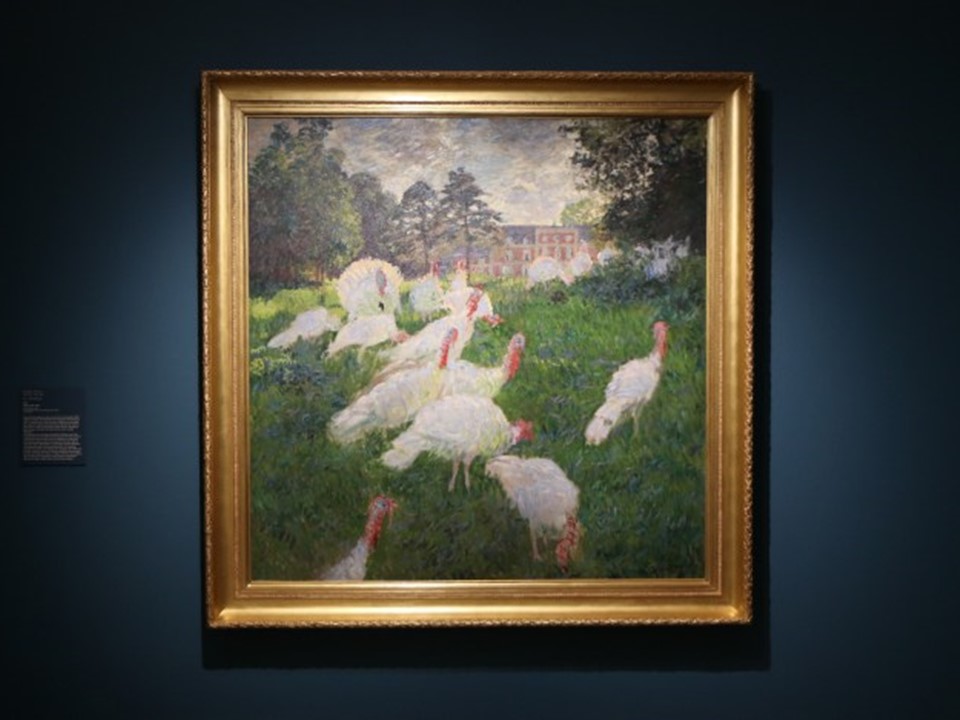
The Turkeys, 1876, oil on canvas, 1876 174×172 cm, Musée d’Orsay, Paris, France
Museum View
Photo Credit @scribeaccroupi
https://scribeaccroupi.fr/visite-privee-collection-depeaux-musee-des-beaux-arts-rouen/
The Turkeys, or Les Dindons, in French, exhibit all of Monet’s visual aesthetics and the driving characteristics behind them. His asymmetric, diagonal composition, in Japanism style, is set in a serene, lush, French countryside landscape. Painted en Plein Air, Les Dindons use a palette of vibrant whites and fresh greens with splashes of red to create an atmosphere of radiance. Finally, Monet’s brushstrokes, a key feature of all of his paintings, are short, fast, turning and twisting, quick to portray the reflective power of the bright morning sun.
For a Student Activity, please… Check HERE!
